This document discusses soil phase relationships and the components that make up soils. It describes soils as having three main phases - solids, water, and air in varying proportions. Soils can exist as two-phase systems (fully saturated or completely dry) or a three-phase partially saturated system. Key relationships between the phases are defined, including void ratio, porosity, degree of saturation, unit weights, and densities. Diagrams and equations are provided to illustrate how the volume and weight of each phase relates to the overall soil properties. The goal is for students to understand the composition of soils and relationships between its variables.


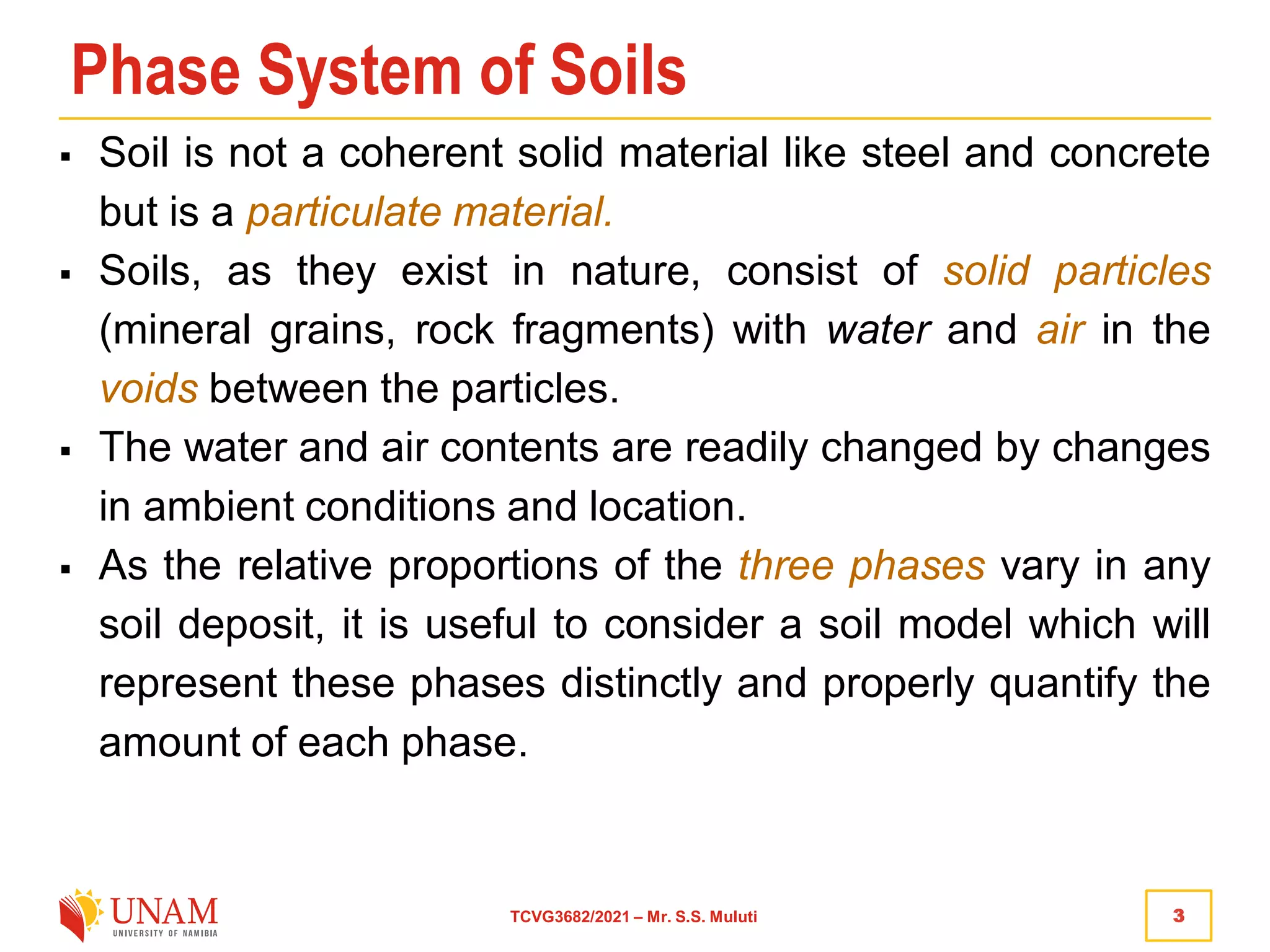


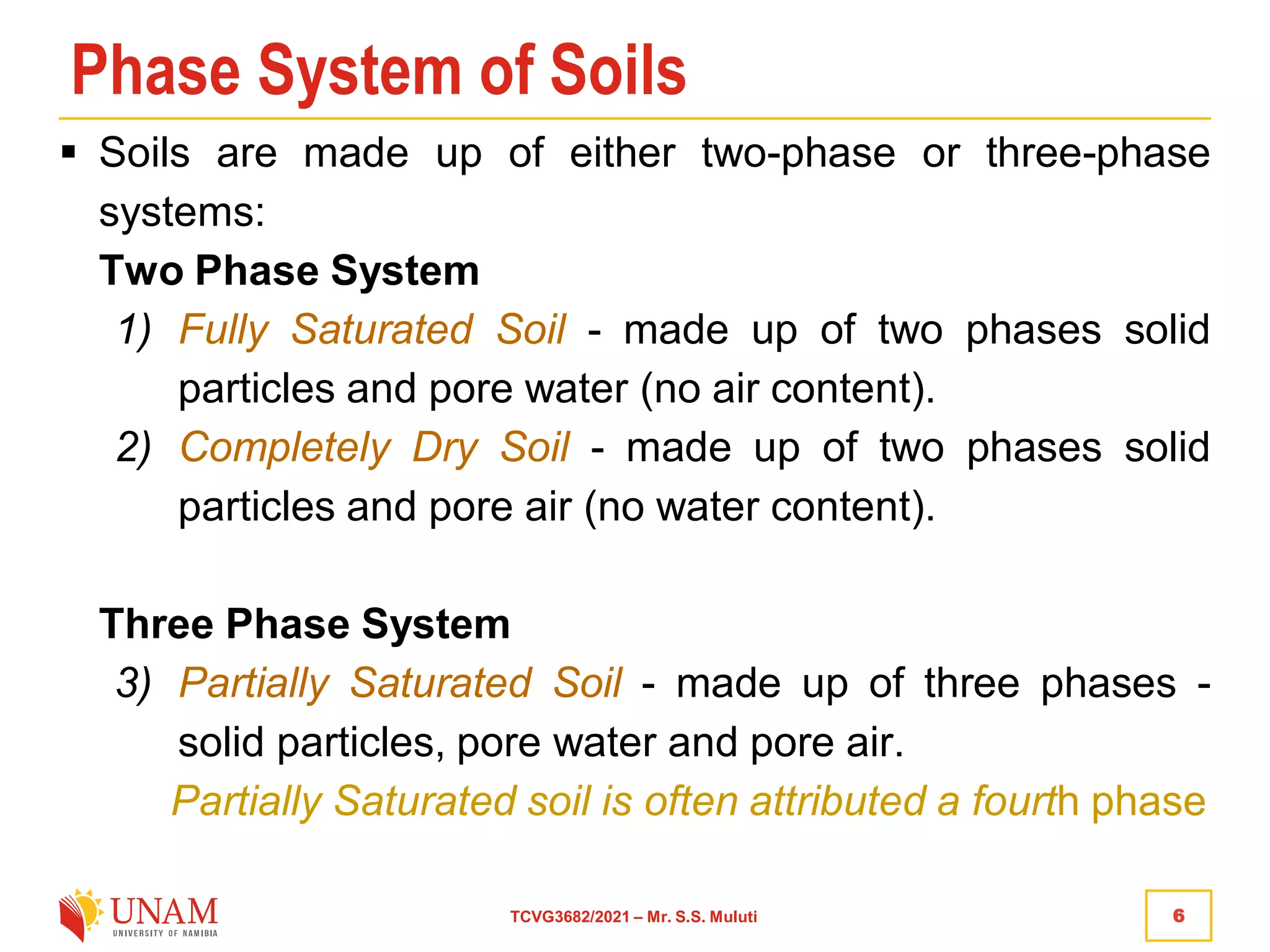


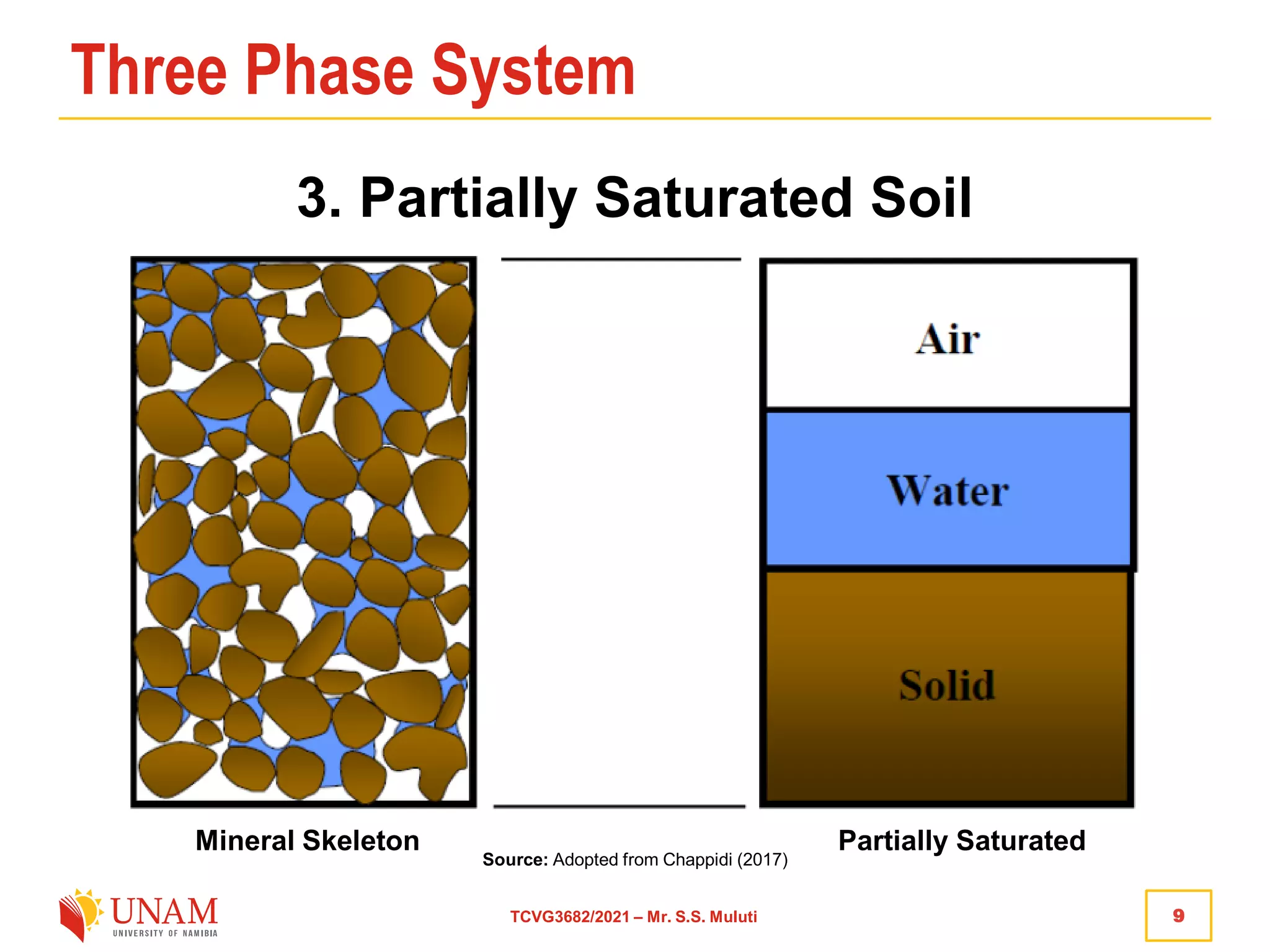

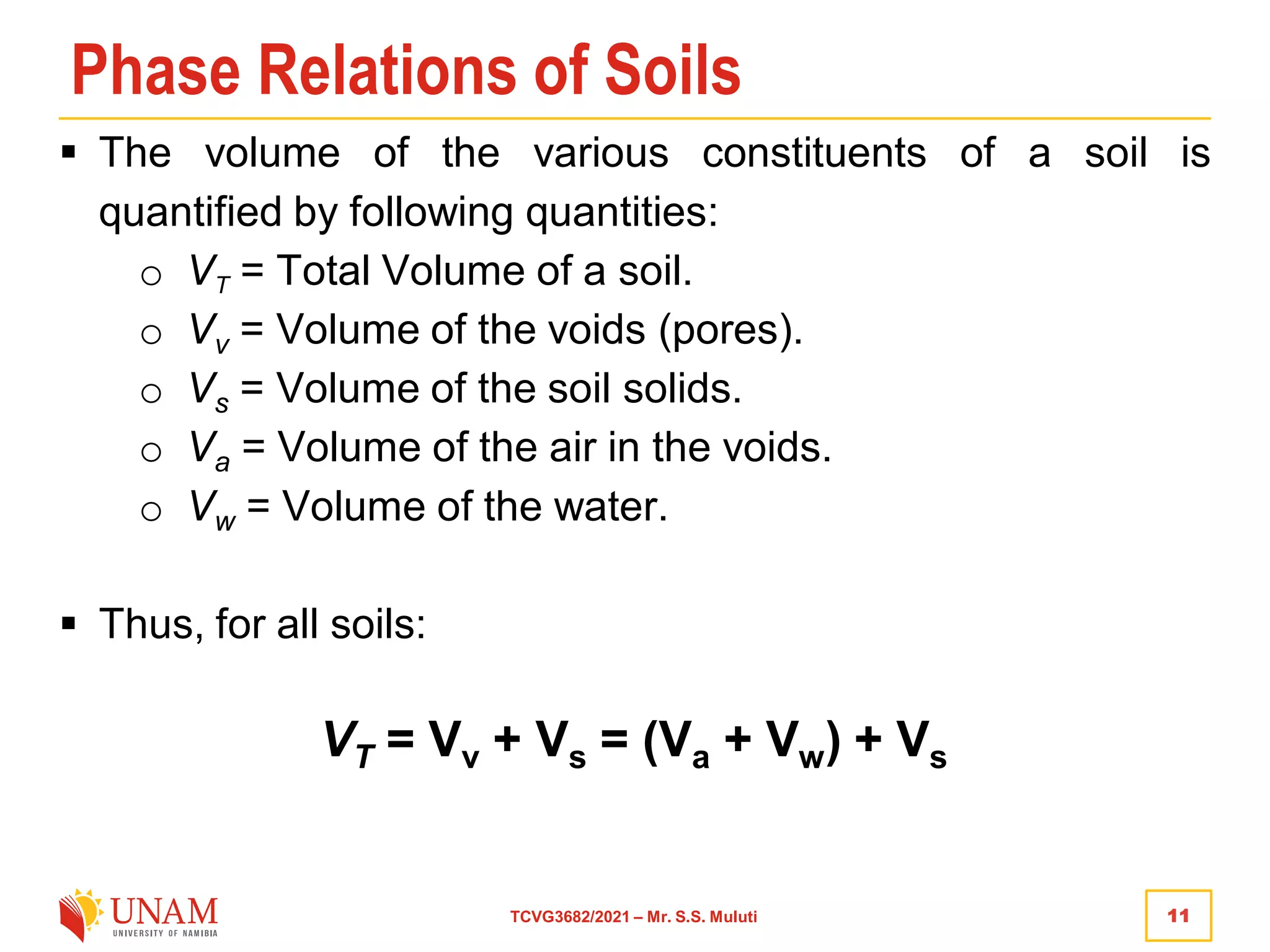

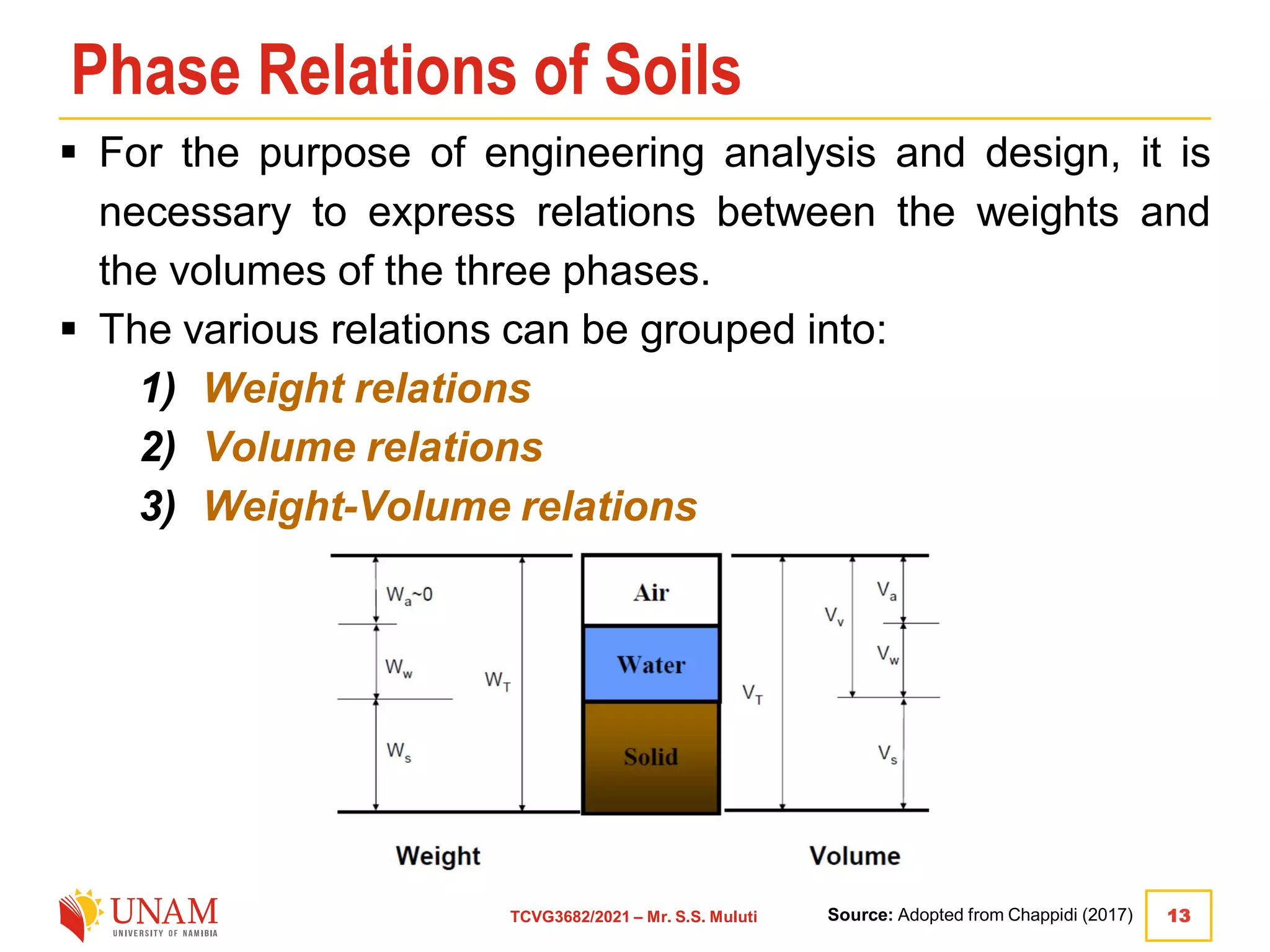








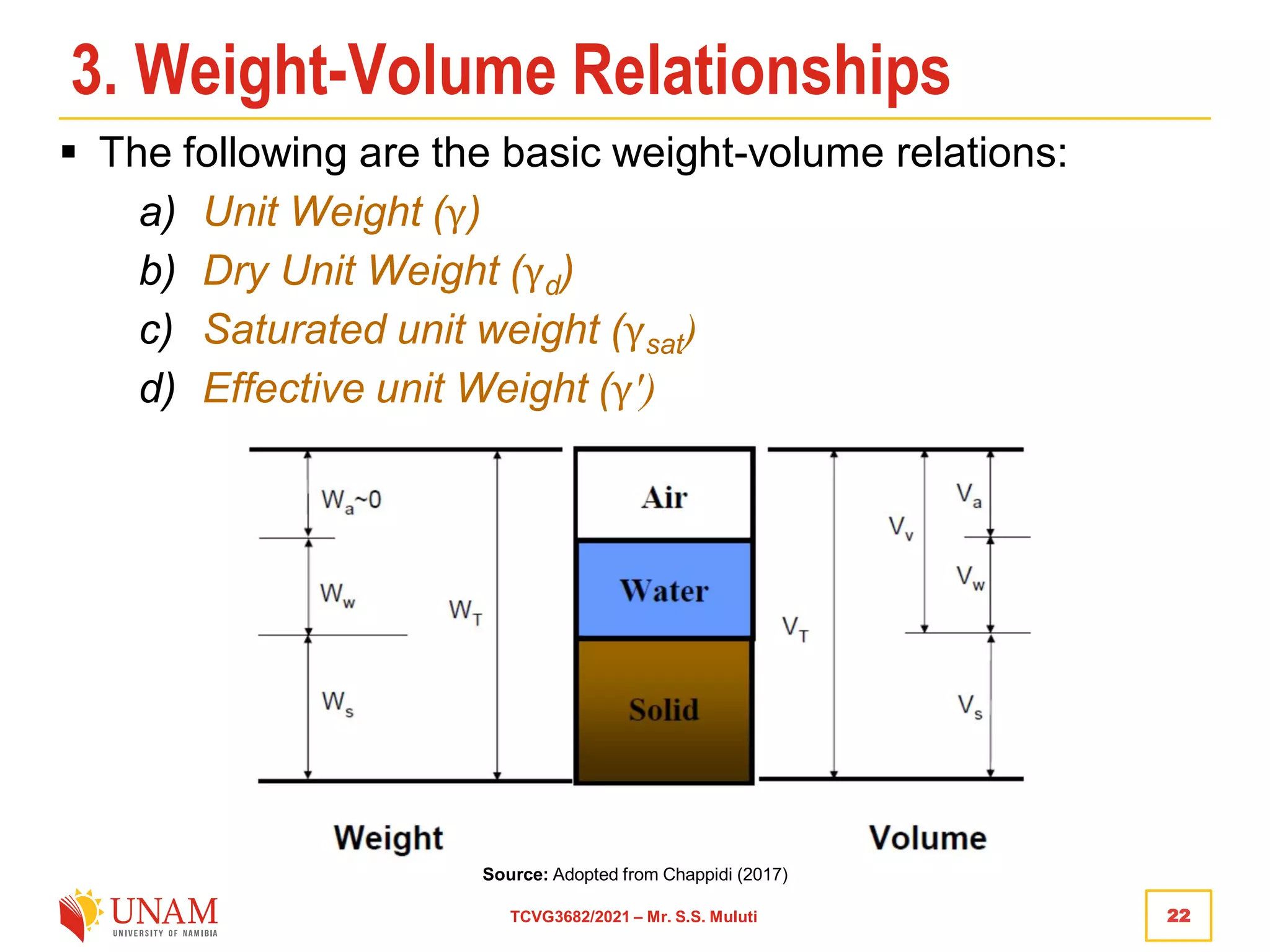
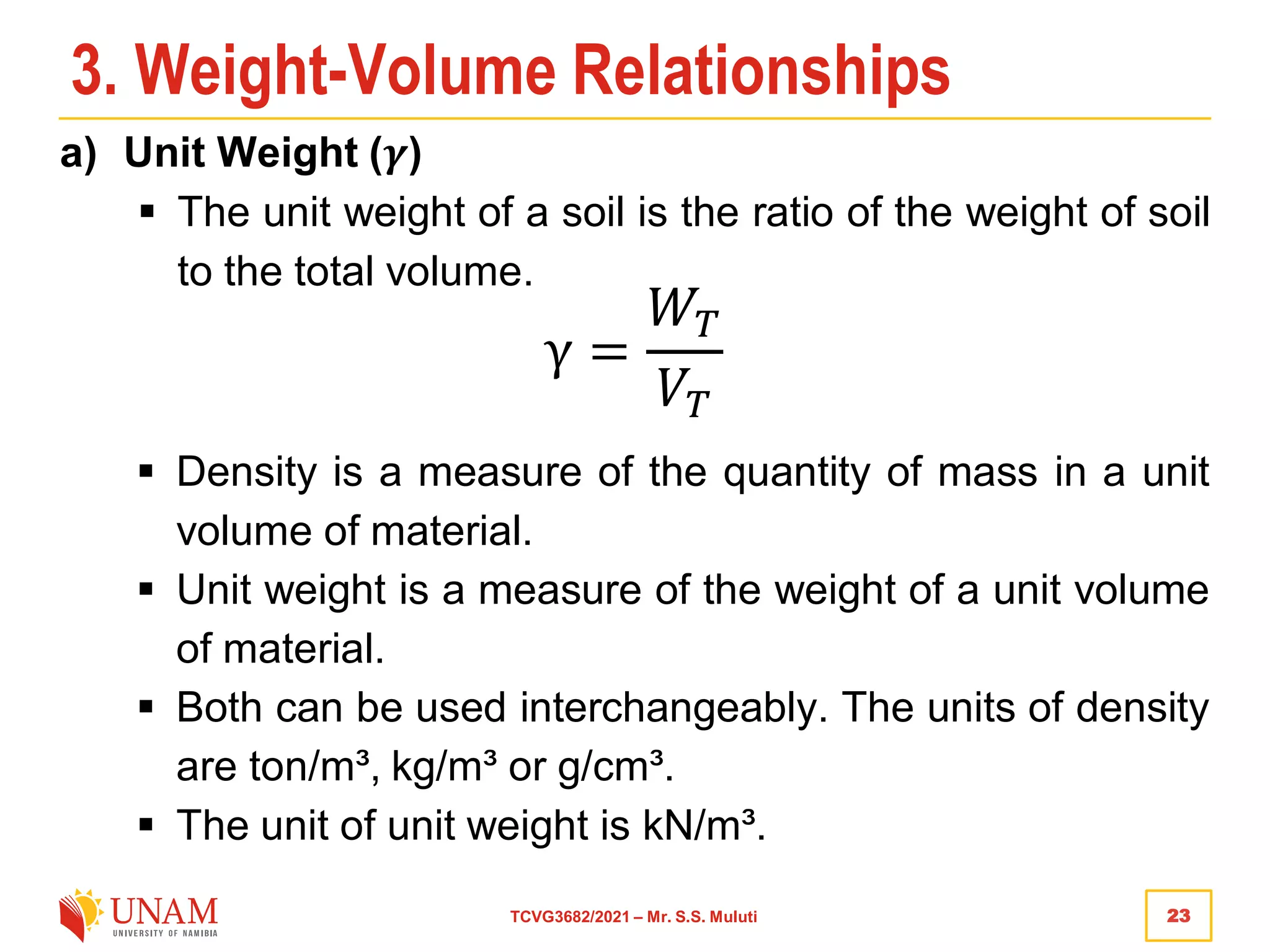
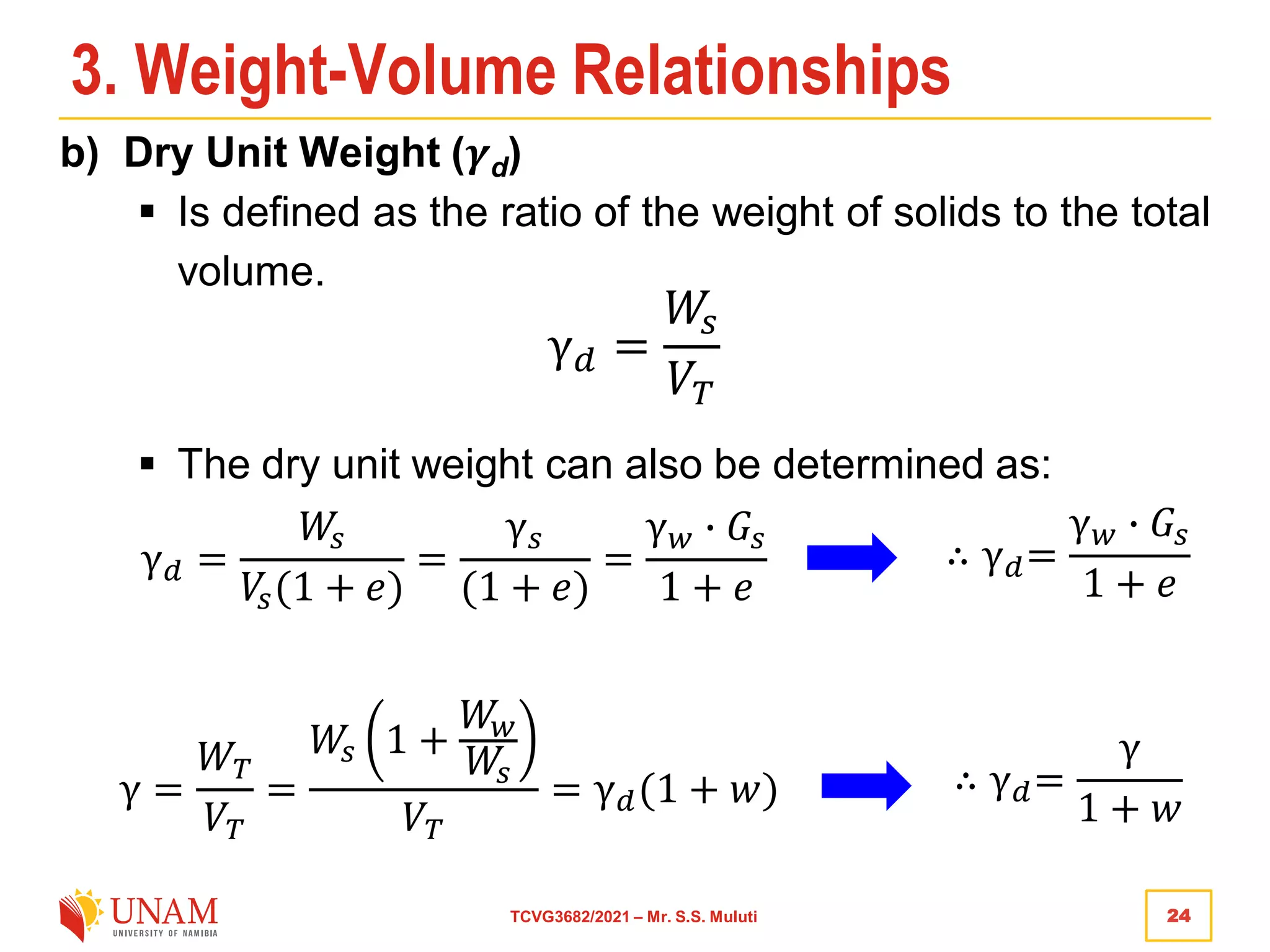
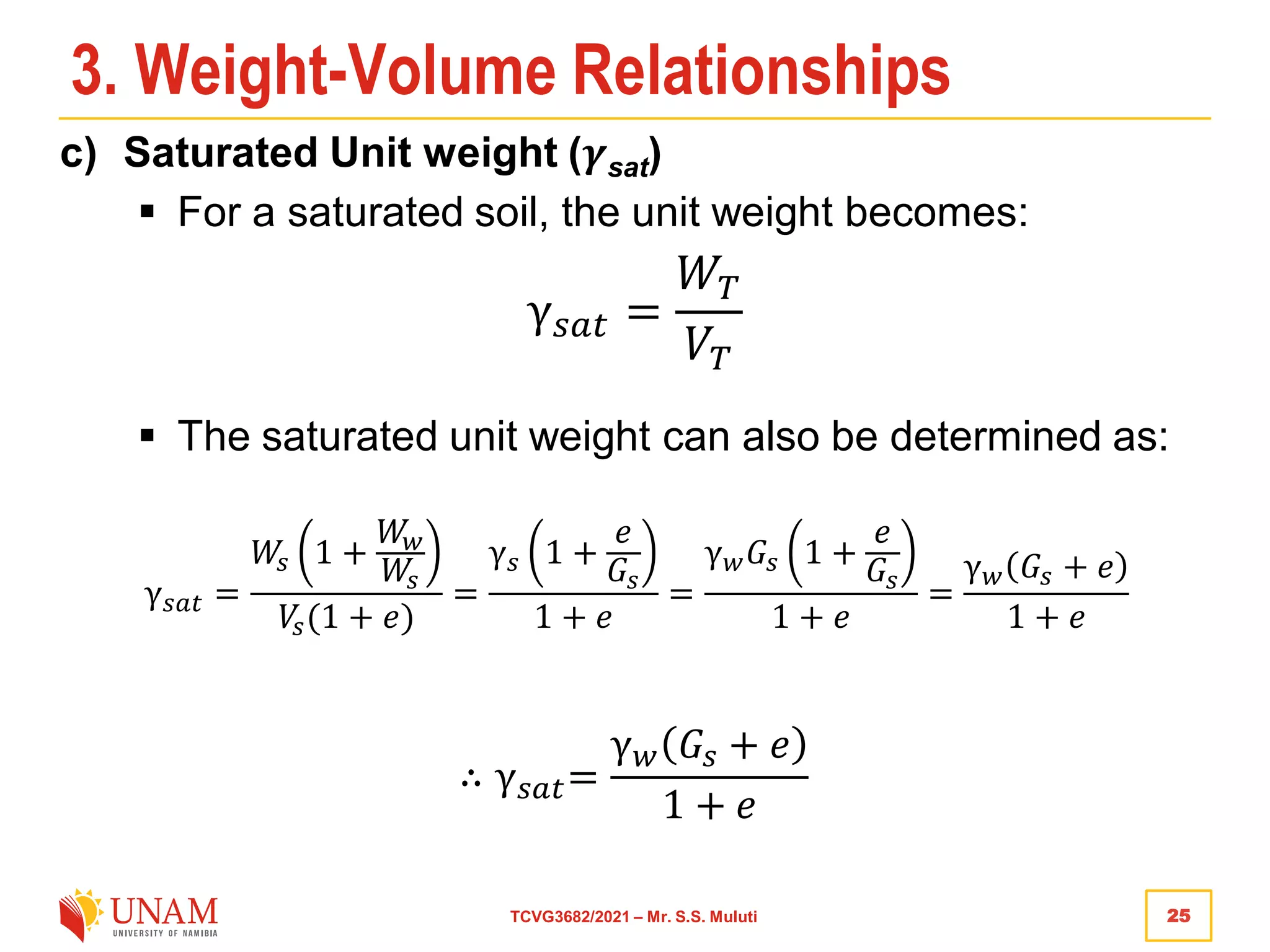


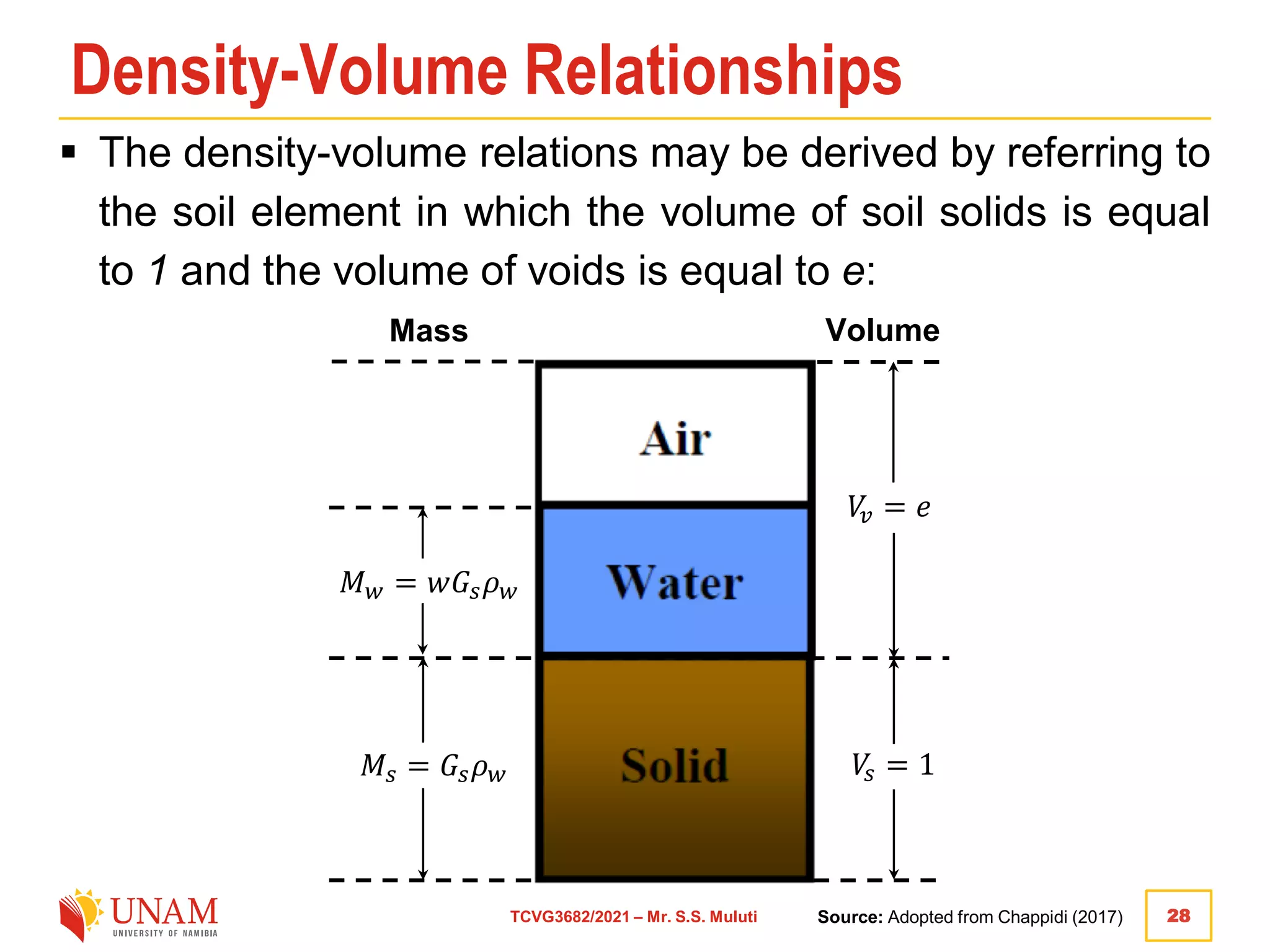



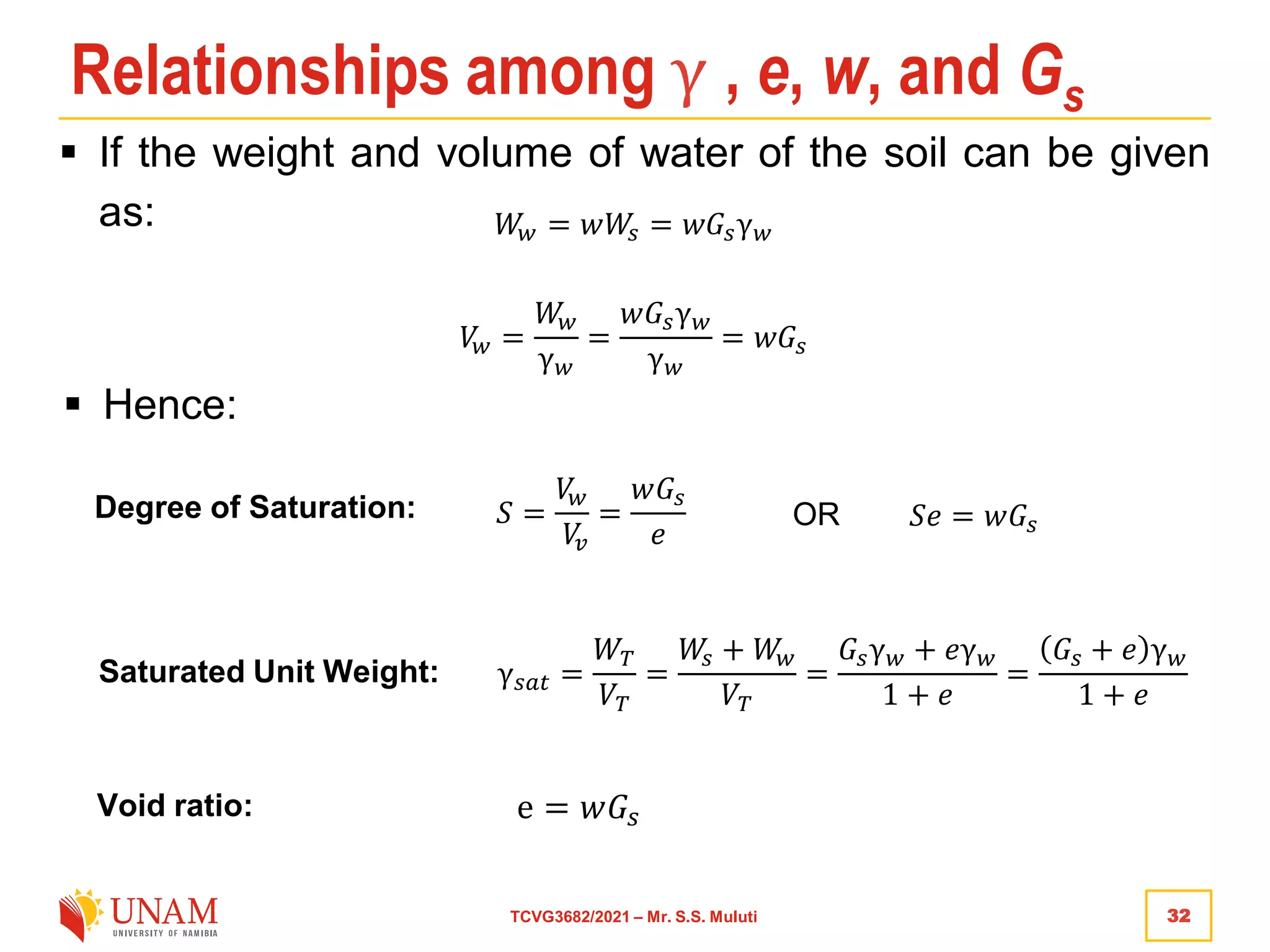

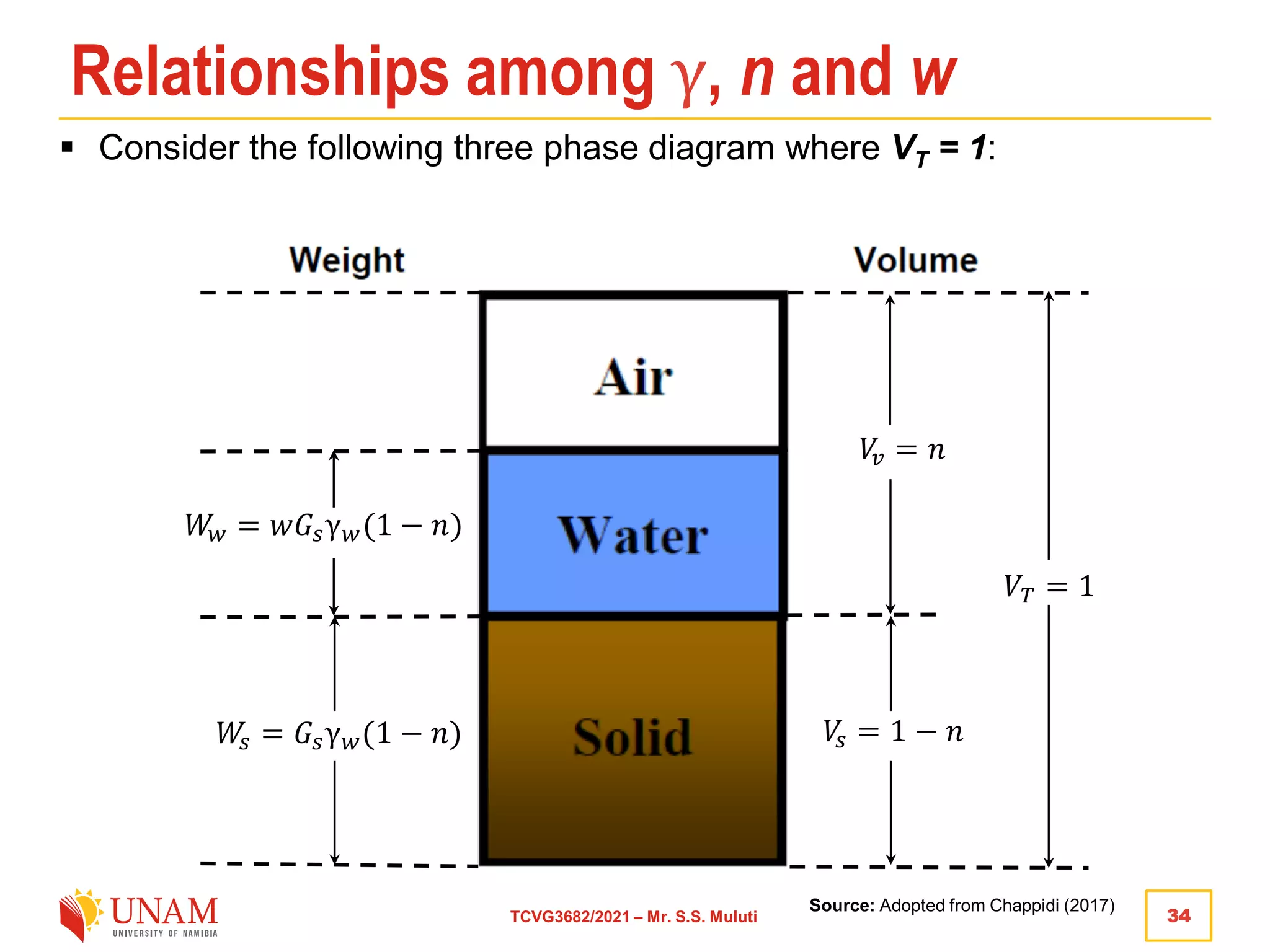

![36
Relationships among γ, n and w.
TCVG3682/2021 – Mr. S.S. Muluti
▪ Hence:
𝑤𝑠𝑎𝑡 =
𝑊
𝑤
𝑊
𝑠
=
𝑛γ𝑤
(1 − 𝑛)γ𝑤𝐺𝑠
=
𝑛
(1 − 𝑛) 𝐺𝑠
γ𝑠𝑎𝑡 =
𝑊𝑇
𝑉𝑇
=
𝑊
𝑠 + 𝑊
𝑤
𝑉𝑇
=
(1 − 𝑛)𝐺𝑠γ𝑤 + 𝑒γ𝑤
1 + 𝑒
= [(1 − 𝑛)𝐺𝑠+𝑛]γ𝑤
Saturated Unit Weight:
Moisture Content:
γ =
𝑊𝑇
𝑉𝑇
=
𝑊
𝑠 + 𝑊
𝑤
𝑉𝑇
= 𝐺𝑠γ𝑤(1 − 𝑛)(1 + 𝑤)
Unit Weight:
γ𝑑 =
𝑊
𝑠
𝑉𝑇
=
𝐺𝑠γ𝑤(1 − 𝑛)
1
= 𝐺𝑠γ𝑤(1 − 𝑛)
Dry Unit Weight:](https://image.slidesharecdn.com/1-230421134012-c4c68f6b/75/1-3-Soil-Phase-Relationships-pdf-36-2048.jpg)




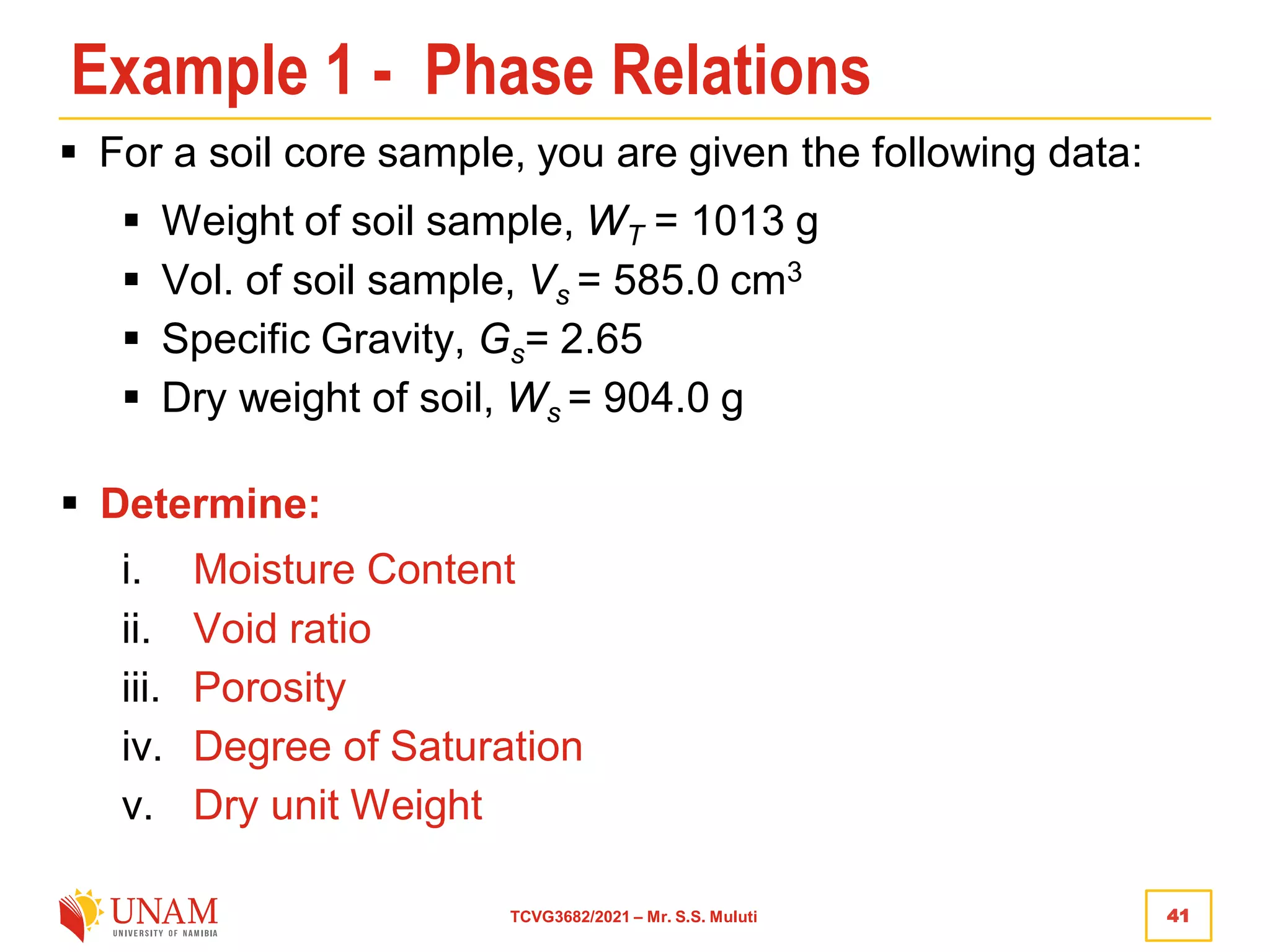

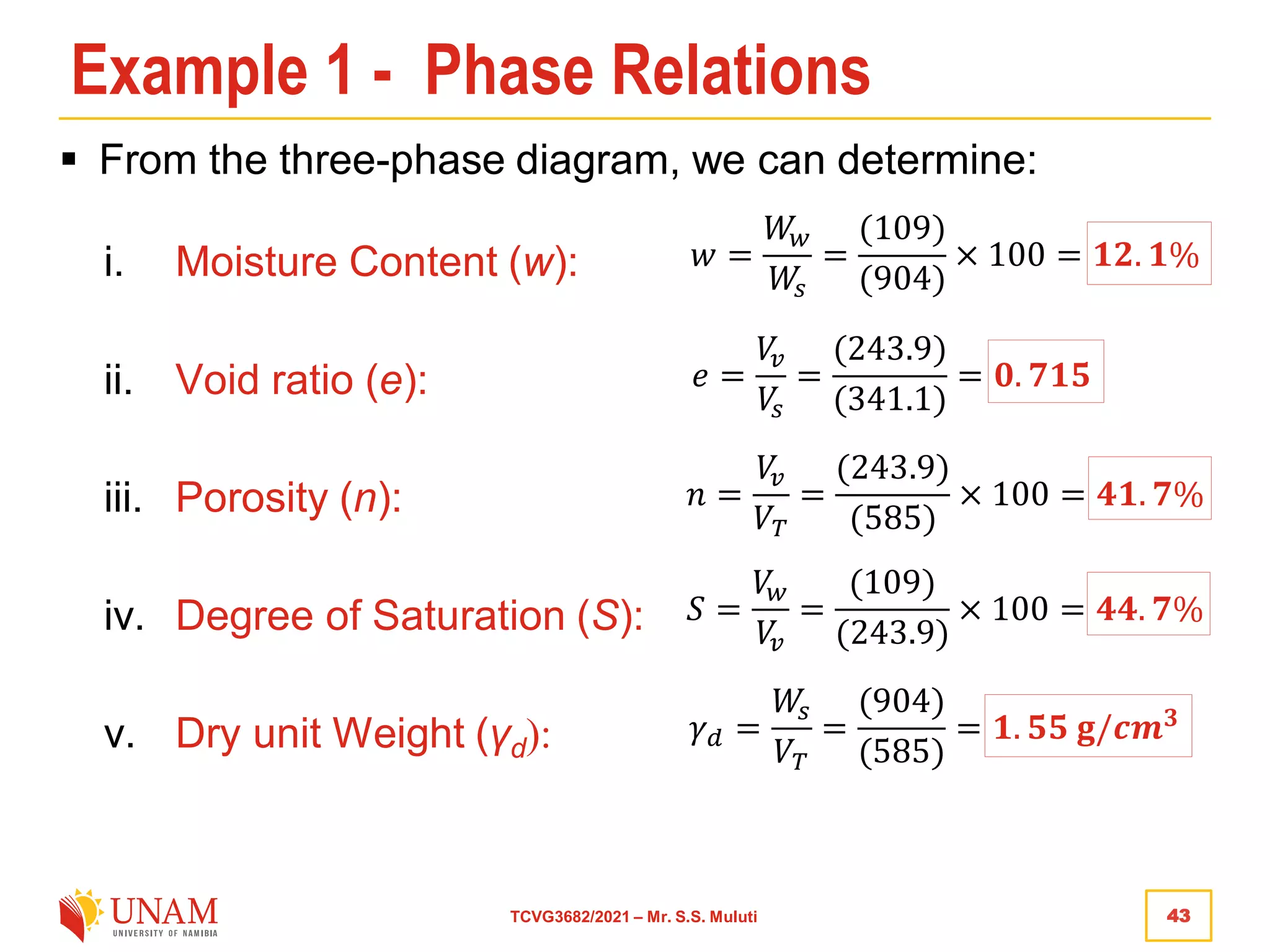
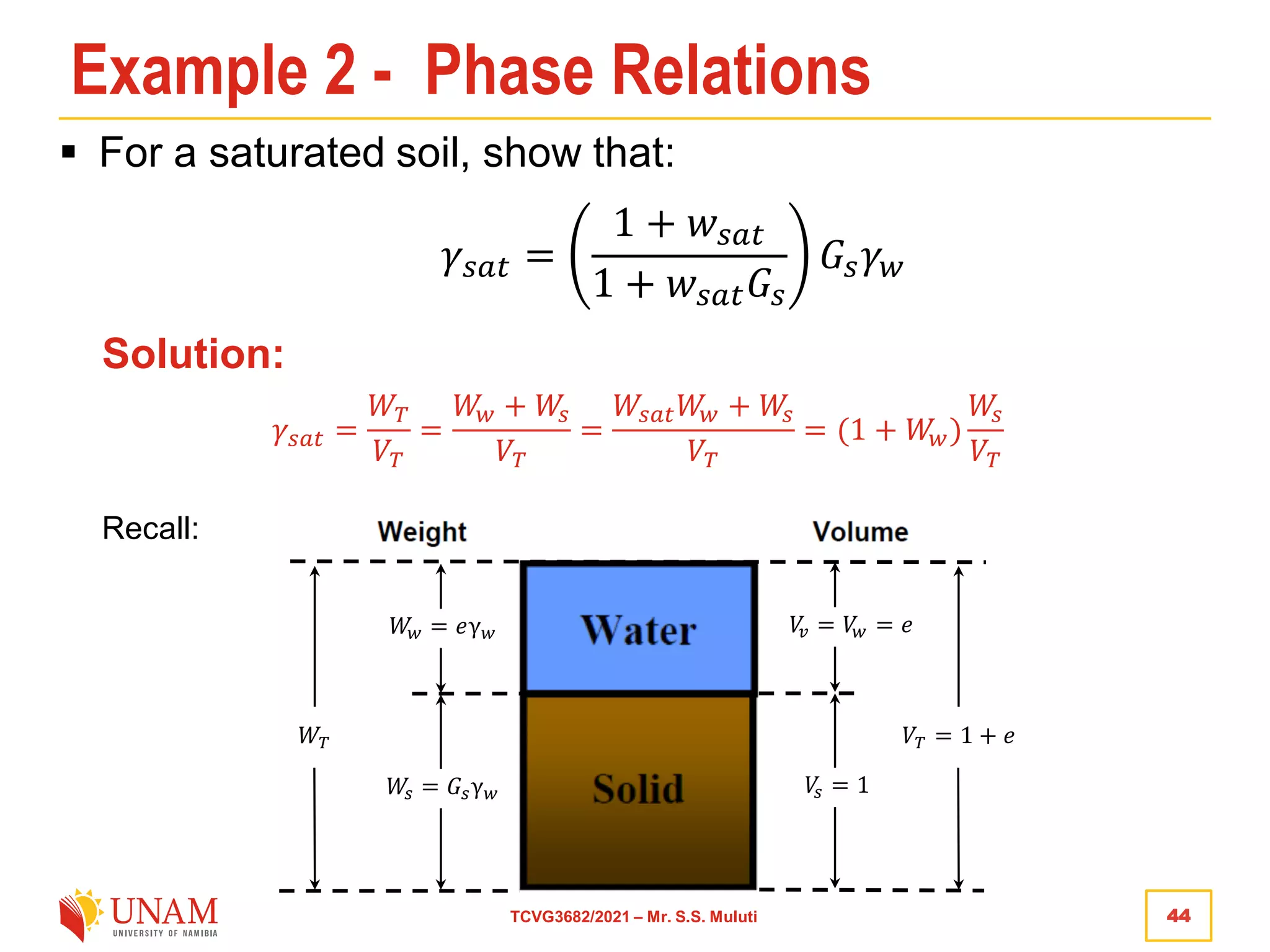

![46
Homework - Phase Relations
TCVG3682/2021 – Mr. S.S. Muluti
▪ Prove the following relationships::
a)
b)
c)
d)
e)
f)
𝛾𝑑 = (1 − n)𝛾𝑤𝐺𝑠
𝛾𝑠𝑎𝑡 = [(𝐺𝑠 − n 𝐺𝑠 − 1 ]𝛾𝑤
𝑊(𝑠𝑎𝑡) =
𝑛𝛾𝑤
𝛾𝑠𝑎𝑡 − 𝑛𝛾𝑤
𝐺𝑠 =
𝛾𝑠𝑎𝑡
𝛾𝑤 − 𝑊
𝑐(𝛾𝑠𝑎𝑡 − 𝛾𝑤)
𝑒 =
𝛾𝑠𝑎𝑡 − 𝛾𝑑
𝛾𝑑 − 𝛾𝑠𝑎𝑡 + 𝛾𝑤)
𝛾𝑠𝑎𝑡 = 𝑛
1 + 𝑤𝑠𝑎𝑡
𝑤𝑠𝑎𝑡
𝛾𝑠𝑎𝑡](https://image.slidesharecdn.com/1-230421134012-c4c68f6b/75/1-3-Soil-Phase-Relationships-pdf-46-2048.jpg)
